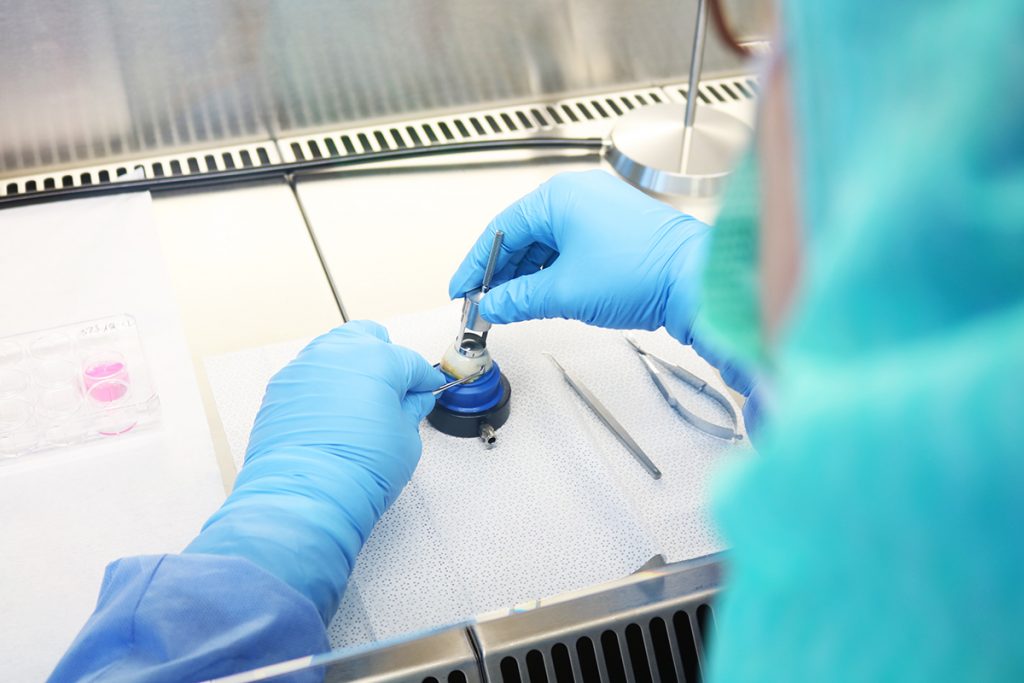What is an eye bank?
An eye bank is a special type of facility that manages the donation and distribution of eye tissue ready for use in transplantations, training, and research. These banks can be eye only banks or multi-tissue banks (e.g. providing skin and bone). They can be a standalone organisation or integrated into hospitals and/or universities. They can perform all or some of the tasks involved in the recovery, management and allocation of the donation.
They act as Custodians of the tissue, and are responsible for recovering the donation, medically evaluating the donor’s history, assessing the risk of potential infectious disease, preparing the tissue and allocating the tissue ready for use. Tissue is obtained only after consent is given by the donor’s family after death. It is only allocated to training or research if consented. Depending on the country, consent may be ‘opt-in’ or ‘opt-out’. Either way, the Eye Bank works with the donor family to ensure the donor wishes are met.
What is donated?
A majority of eye transplantations are corneal transplants, therefore a majority of donations are corneas. Additionally, and lesser known, is that the white of the eye (sclera) can also be donated for other issues such as repair after a tumour is removed or to cover a valve implanted into the eye to help people with glaucoma. People donate their eyes at the end of their life.
Sometimes, eye banks also manage amnion tissue. Amnion is obtained from the placenta, with parental consent. Its delicate nature makes it ideal for patch-repair after a chemical burn on the surface of the eye.
Why is the service called banking?
The term ‘banking’ is used because the donated tissue needs to be checked to ensure it is safe and appropriate for the recipient. Therefore, it is ‘banked’ (stored/retained/held) at the facility until the checks are complete. This also allows the tissue to be prepared ready for the surgical allocation. Most corneal tissue can be ‘banked’ for 2-4 weeks, depending on the preservation medium (cold storage or normothermic storage), with some retained for 12 months (glycerin stored). Scleral tissue can be banked for 12 months (in alcohol), while amnion can be frozen and stored for an extended period.
How is tissue Allocated?
Banks allocate tissue to surgeons and hospitals (and researchers) that are vetted and confirmed as eligible to receive the tissue. They allocate based on the recipient details provided to them by the surgeon and hospital. The tissue, once it is confirmed as ‘safe’ and ‘appropriate’ is then transported to the hospital ready for the surgeon.

How are eye banks approved to provide their service?
Every country and jurisdiction is different, but in general, countries will have in place a Tissue and/or Organ Act. They may also have a department within their Government which is responsible for the oversight of human donations that are used in medical procedures and transplants (+/- research). They may also have a regulatory body that audits the Eye Bank to ensure they are meeting the standards of the Regulator and the governing agency.
In some parts of the world, eye bank associations have formed to help provide additional layers of peer-to-peer standards, develop evidence-based practice, and audit each other. Collectively this helps to ensure the sector is self-accountable and advancing. The Standards produced by these Associations are also used by the Regulators to measure the outcomes of the Eye Bank.
Country dependent, the Eye Bank may also have agreements in place with hospital and mortuary facilities. This allows for the recovery of the donation from their facility.
Transplant procedures are audited through the surgeon and hospital evaluation process, with some countries also having in place a transplant outcome register that tracks the long term outcome of the surgeon and eye bank in relation to each transplant.
Finally, the World Health Organization works at the member state level to develop guidelines aimed at improving donor management and the access to treatments for recipients. In turn, the Global Alliance of Eye Bank Associations (GAEBA) works to harmonise and strengthen ethical conduct. For this, GAEBA developed The Barcelona Principles.

